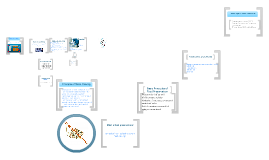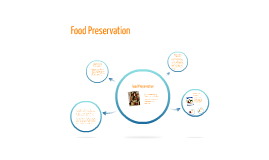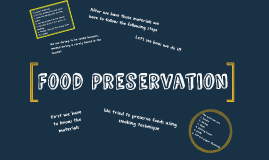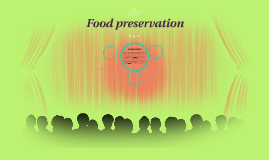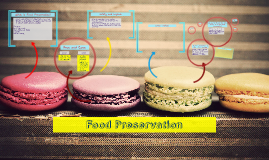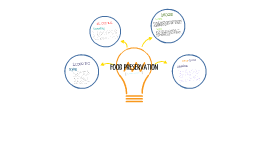Food Preservation
Transcript: Food Preservation Refrigeration is a process in which work is done to move heat from one location to another. Refrigerating Freezing How to can your food 1. Review procedure and equipment needs before buying produce. Choose a time when you can work with few or no interruptions. 2. Wash canning jars in hot sudsy water; rinse. Cover with boiling water until ready to fill. Jars used in recipes in which food is processed for less than 10 minutes must be sterilized by immersion in boiling water for 10 minutes. Prepare lids and screw bands according to manufacturer's directions. 3. Fill canner with water; start heating. 4. Prepare only as much food as needed to fill the maximum number of jars your canner will hold at one time. Work quickly, keeping work area clean. 5. Place hot jars on cloth towels to prevent slippage while filling. 6. Fill jars 7. Add boiling liquid to jar, keeping specified headspace. 8. Release trapped air bubbles in jar by gently working a nonmetallic utensil around the jar's sides. Add liquid if needed to maintain headspace. 9. Set each jar into the canner as it is filled; jars should not touch. 10. Cover canner; process as directed. 11. Remove jars; set on towels or rack, leaving at least 1 inch between jars. 12. After jars are completely cooled (12 to 24 hours), press center of each lid. Refrigerating Refrigeration preserve foods by slowing down the growth and reproduction of micro-organisms and the action of enzymes that cause food to rot. The introduction of commercial and domestic refrigerators drastically improved the diets of many in the Western world by allowing foods such as fresh fruit, salads, and dairy products to be stored safely for longer periods, particularly during warm weather. Canning Canning Processes in Freezing Method 1 of 4: Freezer Storage Methods 1. Seal food destined for the freezer tightly. If the food is exposed to air in its container, plastic bag, or other packaging, it will cause the food to dry out and experience freezer burn. o Place your food in quality freezer bags or plastic containers; alternatively, wrap your food with freezer wrap or aluminum foil. o Squeeze any extra air out of the plastic bags and containers before sealing them. o Leave enough space for your food to expand in the bag or container if you are storing a liquid or a food that contains a lot of juice or gravy. o Be sure to label and date all frozen food. 2. Let warm or hot, freshly cooked foods cool before freezing. This will prevent your food from retaining moisture during the freezing process if you place it into the freezer while it is still warm. Importantly, ensure that this food cools quickly; cool on the kitchen bench until the steam stops escaping. Then, place into the container and freeze. 3. Label and date every container and bag of frozen food. This will help you identify the foods after they have become frozen, and will also help you keep track of the dates on which they were originally placed in the freezer. Place sticker labels on each container or use a permanent marker to label each plastic bag 4. Store your food so that it freezes at a fast pace. The faster your food becomes frozen, the better it will retain its flavor and freshness upon defrosting it. This means avoiding freezing large amounts of food at a time; rather, split the food up. • Package your food in small portions so that it freezes faster, especially if you are freezing large dishes such as casseroles. This also means that it defrosts more quickly and it's easier to add packages together to make enough food than to undo a large package and leave waste. • Place your food in the freezer with space around each item. This will allow the cold air to circulate around your food efficiently and cause it to freeze a fast pace. Thank you for listening :) :) :) Freezing is a common method of food preservation that slows both food decay and the growth of micro-organisms. Besides the effect of lower temperatures on reaction rates, freezing makes water less available for bacterial growth. Freezing, in food processing, method of preserving food by lowering the temperature to inhibit microorganism growth. The method has been used for centuries in cold regions, and a patent was issued in Britain as early as 1842 for freezing food by immersion in an ice and salt brine. It was not, however, until the advent of mechanical refrigeration that the process became widely applicable commercially. In 1880 a cargo of meat shipped from Australia to Britain under refrigeration accidentally froze, with such good results that the process was at once adopted for long-distance shipments and other storage. Canning is a method of preserving food in which the food contents are processed and sealed in an airtight container. Canning provides a shelf life typically ranging from one to five years, although under specific circumstances it can be much longer. Freezing






